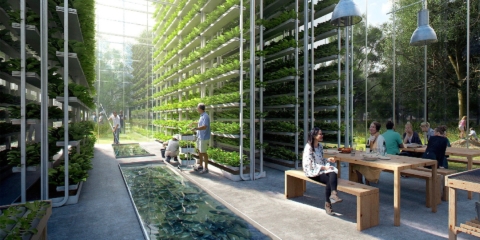Would you like to get notifications from Christian?
Drones have come a long way in the past few years. They are now able to fly autonomously through thick forests, which has opened up a world of new real-world applications. One such application is aerial mapping for conservation and disaster relief work. These drones can navigate their way through dense forest and treacherous terrain, allowing them to gather data that would be difficult or impossible to collect otherwise.
This technology is important because it can be used to help conserve our natural resources and protect people in the event of a disaster. Aerial mapping is an essential tool for conservation work, as it helps us to understand the layout of an area and identify potential threats. It also allows us to monitor changes over time. In the event of a disaster, such as a forest fire, drone swarms can be used to map the affected area and identify areas that need to be evacuated.
This technology is still in its early stages, but it has great potential. As the technology matures, we will likely see more and more drone swarms being used for a variety of applications. We may even see drone swarms being used for things like search and rescue missions or delivering aid to remote areas.
Do you think drone swarms will become a common sight in the future? Let us know in the comments!
Author: Christian Kromme
For Disruptive Inspiration Daily
Christian is a futurist and trendwatcher who speaks about the impact of exponential technologies like AI on organizations, people, and talents. Christian tailors his presentations to your audience's specific industries and needs.



Our world is changing at an exponential rate! A big tidal wave of digital transformation and disruption is coming at us fast. Many organizations see this wave as a threat and experience stress, but there are also organizations that just see this wave as an opportunity.

Imagine sitting with just 10-15 fellow executives at a premier location, gaining clarity on the impact of AI on your industry while enjoying an exquisite dining experience. These are not just meetings—they are transformative moments that will shape the future of your organization



In the future, 3D printing and generative design will allow for products to be designed in a more decentralized manner, and production will take place closer to the customer and fully on-demand. 3D printing technology will also allow for more customization and personalization of products.


The agricultural industry is ripe for disruption. Robotics, AI, and IoT are all technologies that have the potential to radically transform the way we grow food. In combination with vertical farming, these technologies could increase the efficiency and quality of agricultural products.

A human-centered society is one that puts people first and where technology is used to unite and empower people. It is a society that values biological life and dignity above all else. It is a society that recognizes the importance of human relationships and works to strengthen them. In a human-centered society, all members of the community are valued and treated with respect.


The future of healthcare is here. New technologies like AI, IoT, big data, and smart sensors make it possible to become the CEO of your own health. Imagine that your phone can listen to your voice and AI algorithms can detect small nuances in the tone of your voice that indicate specific diseases.
